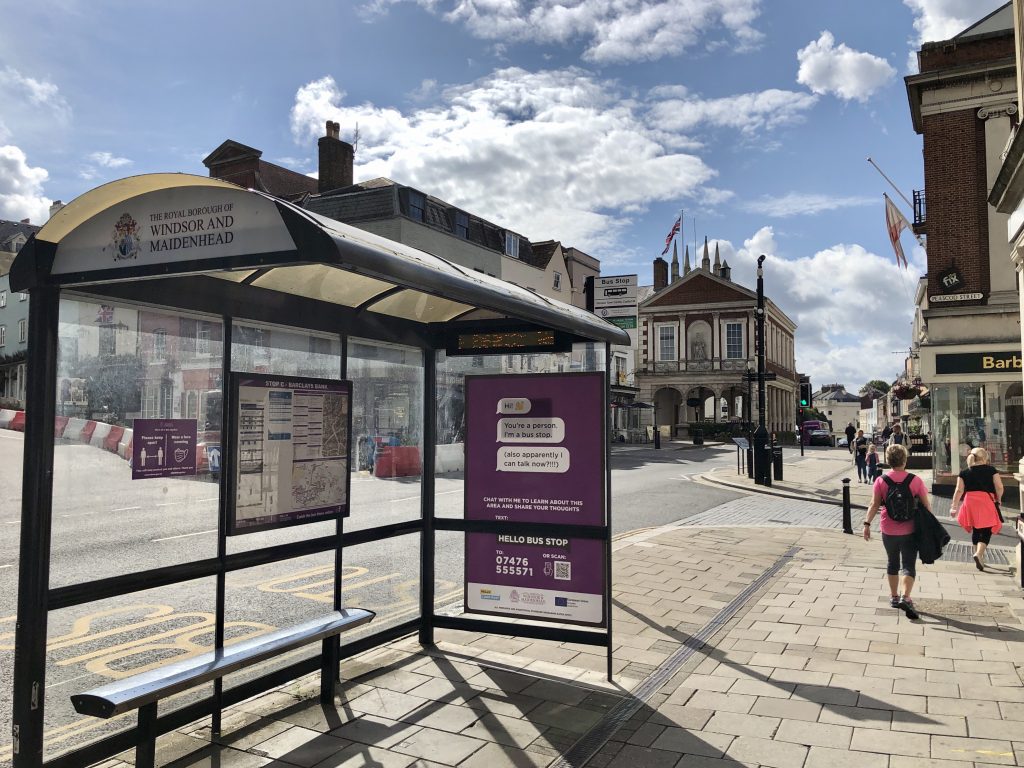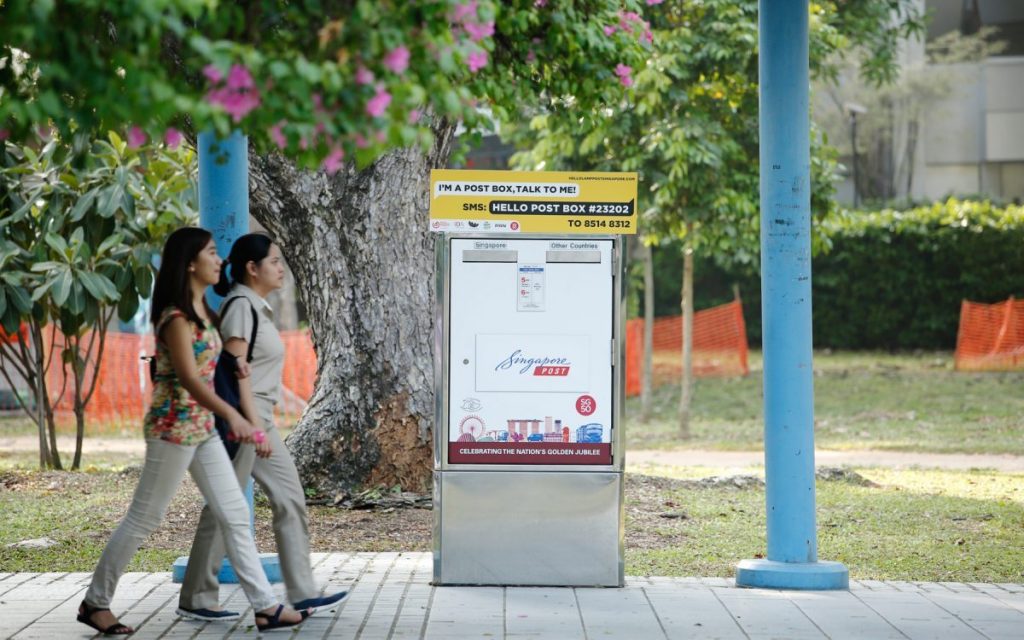Thanks to digital technology, the world is rapidly evolving and the way in which citizens and local governments can communicate and engage has never been more innovative. Smart city technologies are allowing citizens to be at the forefront of decision-making. The concept of smart cities is predicated on the idea of enhancing citizen’s lives through the use of smart technologies and big data. From smart kiosks to smart traffic control systems, to smart waste management, and of course AI- driven conversation technology like Hello Lamp Post, these innovations are transforming the way civilians experience life in cities, towns and communities. Behind every smart city initiative, there must be a government and local council committed to bringing these ideas to life. Check out our blog post here which features some fantastic smart city initiatives from around the world!
The benefits that these technologies are bringing to both councils and citizens are incredible. So, what are these benefits?
- Bridging the gap: The great thing about Hello Lamp Post is that anybody who can send a text can engage with it. This allows councils to reach younger demographics, tourists, older generations, linguistically diverse citizens, time-poor citizens and much more. It is bridging the gap between governments and citizens by making engagement methods accessible, easy to use and convenient for citizens.
- Enhance the citizen voice: This technology is allowing local councils to gather sentiment, opinions and ideas from local citizens in a fun, innovative and interactive way. Using the data collected from Hello Lamp Post allows for more informed strategic decisions to be made. Take action based on what the citizens of your city want, and approach urban planning with a citizen-centric approach.
- Returning to the high street: Post-lockdown, it is important to encourage citizens to return to the high streets in a safe, fun and unique way. Incentivising people with fun technology and gathering feedback on how they’re feeling about society opening up again can help local governments from both an economic and engagement perspective.
One common denominator in all of these technologies is citizen participation. Citizen Participatory Technology, also known as CPT, is centred around involving the citizen in shaping policies, planning and changes in their communities. After all, it is the citizen who lives with the consequential impact of changes and policies in their community. Hello Lamp Post is helping citizens to be directly involved in the planning process, so local councils can gather sentiment, opinions and ideas on the future of urban environments. So, how exactly does this work? The image below shows an example of how Hello Lamp Post is gathering the opinions of local citizens, which is fed back to local governments in order to support the strategic decision-making process. Do you feel like your community has some thoughts to share? Well, with Hello Lamp Post, they can do just that in a truly unique and playful way.

This type of community engagement and public consultation allows for a more human-centric approach to be achieved, as well as actionable insights for local governments to take on board. It also helps to bridge a communication gap between both parties, which is exactly the challenge that Hello Lamp Post is aiming to solve.
The History Of Community Engagement.
Historically, the citizen voice has not always been at the forefront of government or local council decision making. In fact, digital technologies have forced governments to rethink their traditional role and leverage technology to overcome many of the challenges associated with citizen engagement. In its most simple form, community engagement can be defined as a process that brings members of a community or city together to spark more substantial involvement in city-building practices. Community engagement is an important priority for local governments as it helps strengthen local relationships and promotes civic leadership. Many believe that technology giants like Google and Facebook (Also known as Web 2.0 companies) have contributed majorly to this shift. These companies placed their users at the forefront of decision making to add both value and co-creation. Similarly, governments and local councils are now realising the potential of following suit, and are focusing on tapping the knowledge of local citizens to add value to strategic decision making.
The Impact Of Covid-19 on the Global Pandemic
The coronavirus pandemic changed the way in which all industries operated, from retail to tourism and everything in between. Local councils have been no exception to this, and in a time where community engagement has never been so important, traditional methods such as street surveys and town hall meetings have proven ineffective at reaching key demographics. Further, the pandemic has also projected a spotlight on the cracks of traditional community engagement methods. With the world on hold, the doors to practically every building shut and empty streets, the power of CPT became apparent.
Social distancing, large gatherings and even face to face communication are just a few of the things that governments worked so hard to keep under control this past year and a half, but with this came enormous challenges. Questions began to arise, such as; how were citizens feeling? How can they be encouraged to return to the high streets safely once restrictions are lifted? How can those who may be time-poor, linguistically diverse, older or younger be reached? These are some of the challenges that councils have experienced in the past. With CPT, however, many of these challenges are overcome. As the world and its cities, towns and villages continue to become more digitised, so too does the need for more digital community engagement approaches. While traditional methods will remain in place, councils should now look to technology as a way to support and work in tandem with more traditional methods as opposed to eliminating them altogether. It is in this way that governments and citizens will benefit. More technologically challenged or illiterate citizens can continue to engage with the council through traditional methods, while younger demographics can engage through more digital and innovative approaches. There is no doubt that technology has emerged as the saving grace for many through the pandemic, and this is not expected to revert back post-pandemic. Government 2.0 is here, and is here to stay.

The Future of Community Engagement
Gartner Research defines Government 2.0 or the ‘e-government’ as “the use of Web 2.0 technologies, both internally and externally, to increase collaboration and transparency and potentially transform the way government agencies relate to citizens and operate”. There are several key characteristics of Government 2.0, which includes it being citizen-driven, employee-centric, transformational, continuously evolving, leveraging pattern-based strategy capabilities, and requiring a new management style. For more information on each of these characteristics, click here.
There is no doubt that the future of community engagement is digital, and it is now up to local governments globally to commit to a more forward-thinking and digital strategy. All over the world, there are government initiatives and incentives driving smart technology adoption in cities. In the United Kingdom, a range of large smart city initiatives have been undertaken as part of The Technology Strategy Board (TSB) initiative, now known as ‘Innovate UK’, and have gained considerable traction in recent times. At a European level level, there are many initiatives contributing to the rise in smart cities and smart city solutions across the continent. The ‘Smart Cities Marketplace’ is a project supported by the EU Commission. The aim of this initiative is to improve urban life by introducing more sustainable solutions and addressing city-specific challenges in policy areas such as ICT, energy and transport. The goals of this initiative are as follows:
- Develop and implement integrated smart city solutions
- Support networking, partnerships and exchange of information
- Focus on the intersection of energy, ICT and transport
This initiative encourages smart city stakeholders from all over Europe to come together and share ideas, launch various smart city projects and improve policy. The European Innovation Partnership for Smart Cities and Communities is similar in nature, and aims to impede the bottlenecks typically associated with smart cities, co-fund smart city projects and pool together resources to support and coordinate existing city initiatives. Establishing key strategic partnerships between cities throughout Europe is at the forefront of this initiative, encouraging smarter infrastructure and urban systems for the future of European cities. Some goals of this initiative include:
- To Improve overall quality of life of citizens
- To increase European cities competitiveness and highlight the EU as a good place to live
- To improve knowledge share to prevent recurring mistakes
- To achieve social, economic and environmental sustainability
It is important to note that while these initiatives are European-wide, several European cities and countries have their own smart city strategies that work in tandem with these EU initiatives. In Dublin, for example, the ‘Smart Dublin Initiative’, whose aim is to ‘bring together technology providers, academia and citizens to transform public services and enhance quality of life’ has experienced tremendous growth in recent years. Some other notable city-wide initiatives include Copehagen’s ‘Copenhagen Connecting’ project, driven by Copenhagen Solutions Lab, Amsterdam’s ‘Amsterdam Smart City’ initiative, Barcelona’s ‘Smart City 3.0’ initiative, Helsinki’s smart city initiative as part of the ‘Forum Virium’ plan, Manchester’s ‘CityVerve’ initiative and Vienna’s ‘Smart City Wien’ initiative. Each of these share the same goals as those discussed above, and aim to improve overall quality of life and connectivity.

These initiatives, coupled with exciting and innovative smart city solutions such as Hello Lamp Post are bringing cities to life all over the world, connecting citizens and governing bodies in ways never seen before. Community engagement will be more connected, reach further demographics and improve overall harmony between governments, local councils and communities.
If you’d like to humanise your city, improve local democracy and use technology to drive positive changes within your community or company, contact us and we’d be happy to have a chat! You can fill out our contact form here.Back














